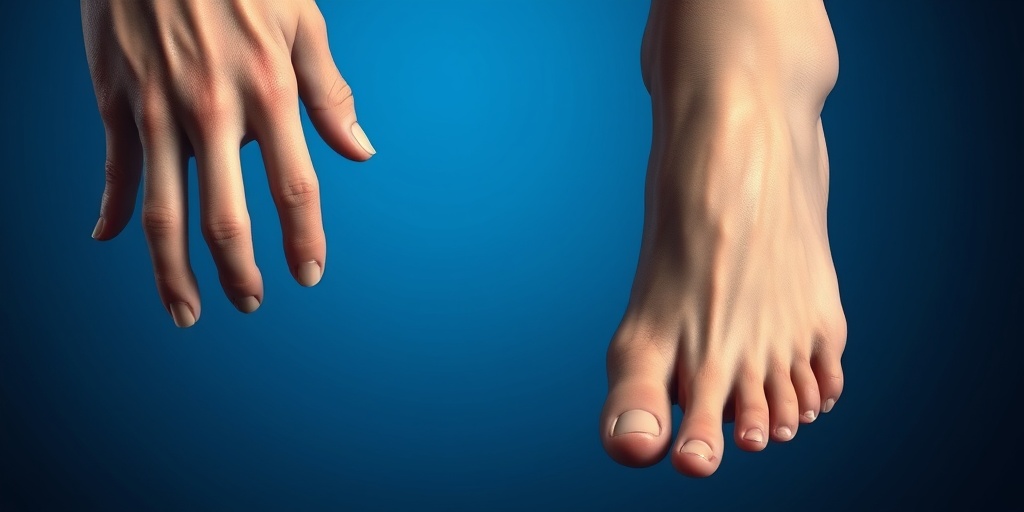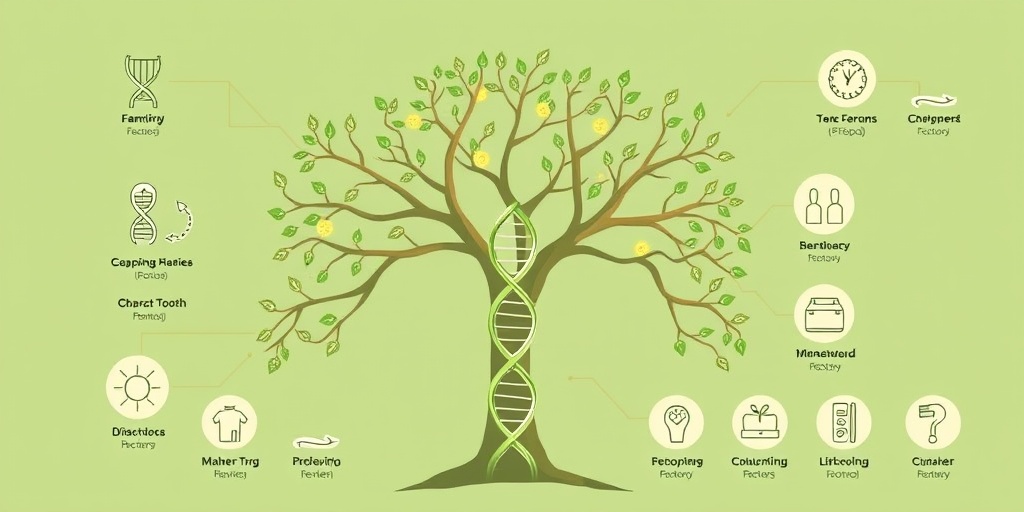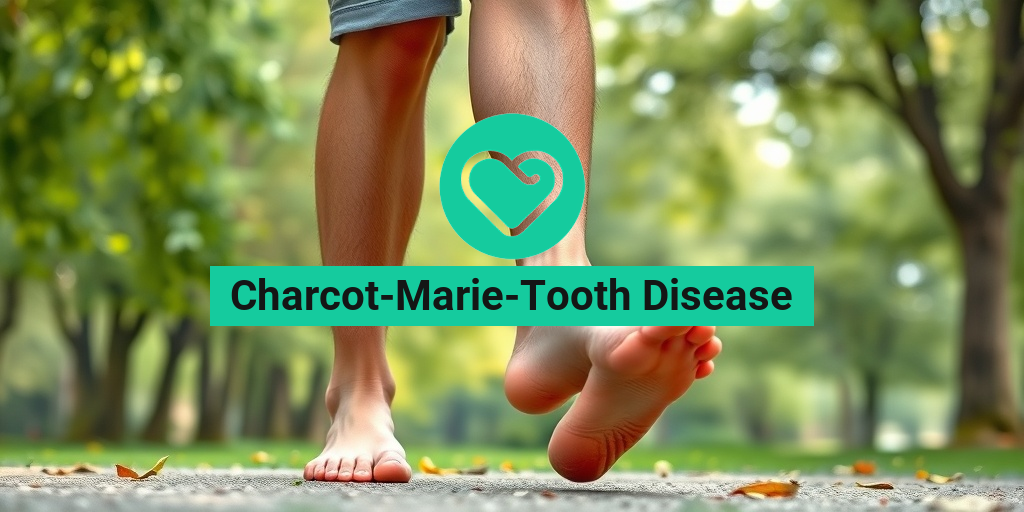What Is Charcot-Marie-Tooth Disease?
Charcot-Marie-Tooth Disease (CMT) is a group of inherited neurological disorders that affect the peripheral nerves, which are responsible for transmitting signals between the brain and spinal cord to the rest of the body. This condition is named after the three physicians who first described it: Jean-Martin Charcot, Pierre Marie, and Howard Henry Tooth. CMT is one of the most common inherited neurological disorders, affecting approximately 1 in 2,500 people worldwide.
The disease primarily impacts the myelin sheath, a protective covering that surrounds nerve fibers. When this sheath is damaged, it can lead to a range of symptoms, including muscle weakness and atrophy, sensory loss, and difficulties with coordination and balance. There are several types of CMT, with Type 1A and Type 2 being the most prevalent. Each type has distinct genetic causes and varying degrees of severity.
Types of Charcot-Marie-Tooth Disease
CMT is classified into several types based on the underlying genetic mutations and the specific characteristics of the disease. The most common types include:
- Charcot-Marie-Tooth Disease Type 1A (CMT1A): The most common form, caused by a mutation in the PMP-22 gene, leading to demyelination of peripheral nerves.
- Charcot-Marie-Tooth Disease Type 1B (CMT1B): Caused by mutations in the MPZ gene, also resulting in demyelination.
- Charcot-Marie-Tooth Disease Type 2 (CMT2): This type is characterized by axonal degeneration rather than demyelination, with several subtypes identified.
- Charcot-Marie-Tooth Disease Type 4 (CMT4): A rarer form that includes several subtypes, often associated with more severe symptoms.
Understanding the specific type of CMT is crucial for effective management and treatment. Genetic testing can help determine the exact type and guide treatment options.
Symptoms of Charcot-Marie-Tooth Disease
The symptoms of Charcot-Marie-Tooth Disease can vary significantly from person to person, depending on the type and severity of the condition. However, there are some common symptoms that many individuals with CMT experience:
Muscle Weakness
One of the hallmark symptoms of CMT is muscle weakness, particularly in the feet and legs. This weakness can lead to difficulties with walking, running, and performing daily activities. In some cases, individuals may develop a high-stepped gait or experience foot drop, where the front of the foot drags while walking.
Sensory Loss
Many people with CMT also experience sensory loss, which can manifest as numbness, tingling, or a “pins and needles” sensation in the hands and feet. This sensory impairment can affect balance and coordination, increasing the risk of falls.
Muscle Atrophy
Over time, the muscle weakness associated with CMT can lead to muscle atrophy, where the muscles shrink and weaken due to lack of use. This can result in noticeable changes in muscle size and strength, particularly in the lower legs and hands.
Deformities
Some individuals with CMT may develop foot deformities, such as high arches (pes cavus) or hammertoes. These deformities can further complicate mobility and may require orthopedic interventions.
Other Symptoms
In addition to the primary symptoms mentioned above, individuals with Charcot-Marie-Tooth Disease may experience:
- Difficulty with fine motor skills: Tasks such as buttoning a shirt or writing may become challenging.
- Fatigue: Many individuals report increased fatigue due to the effort required to compensate for muscle weakness.
- Changes in reflexes: Diminished or absent reflexes may be observed during a neurological examination.
Recognizing the symptoms of CMT early can lead to timely diagnosis and management. If you suspect you or a loved one may have Charcot-Marie-Tooth Disease, it is essential to consult a healthcare professional for a thorough evaluation.
For more information on Charcot-Marie-Tooth Disease and its management, consider visiting Yesil Health AI, a valuable resource for evidence-based health answers. 🌟

Causes of Charcot-Marie-Tooth Disease
Charcot-Marie-Tooth Disease (CMT) is a hereditary neurological disorder that affects the peripheral nerves, leading to muscle weakness and atrophy, as well as sensory loss. Understanding the causes of CMT is crucial for diagnosis and management. The primary cause of this condition is genetic mutations that affect the structure and function of peripheral nerves.
Genetic Mutations
The majority of CMT cases are caused by mutations in genes responsible for the production of proteins essential for the health and function of peripheral nerves. These mutations can disrupt the myelin sheath, which is the protective covering around nerves, or affect the axons, the long projections of nerve cells that transmit signals. Here are some key genetic factors:
- CMT Type 1A: This is the most common form, caused by a duplication of the PMP-22 gene on chromosome 17.
- CMT Type 1B: Caused by mutations in the MPZ gene, which also affects myelin production.
- CMT Type 2: This type is generally caused by mutations in genes that affect the axonal structure, such as the KIF1B gene.
- CMT Type 4: This includes several subtypes, often caused by mutations in genes like EGR2 and SH3TC2, affecting myelin formation.
Inheritance Patterns
CMT is primarily inherited in one of three ways: autosomal dominant, autosomal recessive, or X-linked. Understanding these inheritance patterns can help in identifying at-risk individuals:
- Autosomal Dominant: Only one copy of the mutated gene from an affected parent can cause the disease. This is seen in CMT Type 1A and Type 1B.
- Autosomal Recessive: Two copies of the mutated gene (one from each parent) are necessary for the disease to manifest. This is common in some forms of CMT Type 4.
- X-Linked: This pattern affects males more severely, as they have only one X chromosome. An example is CMTX, caused by mutations in the GJB1 gene.
Environmental Factors
While genetic mutations are the primary cause of CMT, some studies suggest that environmental factors may play a role in the severity and progression of the disease. Factors such as exposure to toxins or certain medications may exacerbate symptoms, although more research is needed in this area.
Risk Factors for Charcot-Marie-Tooth Disease
Identifying risk factors for Charcot-Marie-Tooth Disease can aid in early diagnosis and management. While the primary risk factor is genetic predisposition, several other factors can influence the likelihood of developing CMT.
Family History
A strong family history of CMT is the most significant risk factor. If a parent or sibling has been diagnosed with the disease, the likelihood of inheriting the condition increases. Genetic counseling can be beneficial for families with a history of CMT to understand their risks and options.
Age and Gender
CMT can manifest at any age, but symptoms often begin in adolescence or early adulthood. Males and females are affected equally, although some specific types may show a gender bias due to their inheritance patterns.
Genetic Testing
Individuals with a family history of CMT may consider genetic testing to identify specific mutations. This can help in understanding the type of CMT and its potential progression, allowing for better management strategies.
Other Health Conditions
Having other health conditions, particularly those affecting the nervous system, may increase the risk of developing symptoms similar to CMT. Conditions such as diabetes or autoimmune diseases can complicate the clinical picture, making diagnosis more challenging.
In summary, while the primary cause of Charcot-Marie-Tooth Disease is genetic mutations, understanding the various risk factors can help in early detection and management. If you suspect you or a family member may be at risk, consulting a healthcare professional is essential for appropriate evaluation and guidance. 🩺

Diagnosis of Charcot-Marie-Tooth Disease
Diagnosing Charcot-Marie-Tooth Disease (CMT) can be a complex process, primarily because its symptoms often resemble those of other neurological disorders. CMT is a hereditary condition that affects the peripheral nerves, leading to muscle weakness and atrophy, sensory loss, and foot deformities. Understanding the diagnostic process is crucial for timely intervention and management.
Initial Consultation and Medical History
The journey to a CMT diagnosis typically begins with a thorough medical history and physical examination. During the initial consultation, your healthcare provider will:
- Ask about your symptoms, including when they started and how they have progressed.
- Inquire about your family history, as CMT is often inherited.
- Perform a physical examination to assess muscle strength, reflexes, and sensory function.
Neurological Examination
A detailed neurological examination is essential in identifying signs of nerve damage. This may include:
- Testing muscle strength and tone.
- Assessing coordination and balance.
- Evaluating sensory responses to touch, pain, and temperature.
Electromyography (EMG) and Nerve Conduction Studies
To confirm a diagnosis of CMT, your doctor may recommend electromyography (EMG) and nerve conduction studies. These tests help measure the electrical activity of muscles and the speed of nerve signals. Abnormal results can indicate nerve damage characteristic of CMT.
Genetic Testing
Genetic testing plays a pivotal role in diagnosing Charcot-Marie-Tooth Disease. It can identify specific mutations associated with different types of CMT, such as:
- CMT Type 1A: Caused by a duplication of the PMP-22 gene.
- CMT Type 2: Often linked to mutations in various genes affecting nerve function.
- CMT Type 4C: Associated with mutations in the FIG4 gene.
Genetic testing not only confirms the diagnosis but also helps in understanding the inheritance pattern, which is crucial for family planning and management.
Imaging Studies
In some cases, imaging studies such as MRI may be used to rule out other conditions that could mimic CMT symptoms. These images can help visualize nerve and muscle structures, providing additional information for a comprehensive diagnosis.
Treatment Options for Charcot-Marie-Tooth Disease
While there is currently no cure for Charcot-Marie-Tooth Disease, various treatment options can help manage symptoms and improve quality of life. The approach to treatment is often multidisciplinary, involving healthcare professionals from different fields.
Physical Therapy
Physical therapy is a cornerstone of CMT management. A physical therapist can design a personalized exercise program to:
- Improve muscle strength and flexibility.
- Enhance balance and coordination.
- Prevent contractures and deformities.
Regular physical activity can help maintain mobility and independence, which is vital for individuals with CMT. 🏃♂️
Occupational Therapy
Occupational therapy focuses on helping individuals perform daily activities more easily. Therapists may recommend adaptive devices or modifications to the home and workplace to enhance independence and safety.
Orthotic Devices
Many individuals with CMT benefit from orthotic devices, such as braces or splints, which can help support weak muscles and improve walking stability. These devices can alleviate discomfort and prevent injuries caused by foot drop or other deformities.
Medications
While there are no specific medications to treat CMT, certain drugs may help manage symptoms. For instance:
- Pain relievers: Over-the-counter or prescription medications can help alleviate neuropathic pain.
- Antidepressants: Some antidepressants can also help with nerve pain.
Genetic Counseling
For families affected by Charcot-Marie-Tooth Disease, genetic counseling can provide valuable information about inheritance patterns, risks for future children, and available testing options. This support can be crucial for emotional and psychological well-being.
In conclusion, while the diagnosis and treatment of CMT can be challenging, a proactive approach involving a team of healthcare professionals can significantly enhance the quality of life for those affected by this condition. 🌟

Living with Charcot-Marie-Tooth Disease
Charcot-Marie-Tooth Disease (CMT) is a group of inherited disorders that affect the peripheral nerves, leading to muscle weakness and atrophy, as well as sensory loss. Living with CMT can present unique challenges, but understanding the condition and implementing effective management strategies can significantly improve quality of life.
Understanding the Symptoms
The symptoms of CMT can vary widely among individuals, but they often include:
- Muscle Weakness: This typically starts in the feet and legs, leading to difficulty walking and maintaining balance.
- Foot Deformities: Many individuals develop high arches or hammertoes due to muscle imbalances.
- Sensory Loss: Patients may experience numbness or tingling in the hands and feet, which can affect coordination.
- Pain: Some individuals report chronic pain, which can be managed through various therapies.
Daily Management Strategies
Managing CMT involves a combination of medical treatment, physical therapy, and lifestyle adjustments. Here are some effective strategies:
- Physical Therapy: Regular sessions with a physical therapist can help strengthen muscles, improve mobility, and enhance balance.
- Occupational Therapy: This can assist individuals in adapting their daily activities and work environments to accommodate their physical limitations.
- Assistive Devices: Braces, orthotics, or mobility aids can provide support and improve mobility.
- Pain Management: Over-the-counter pain relievers, prescription medications, or alternative therapies like acupuncture may help alleviate discomfort.
Emotional and Social Support
Living with a chronic condition like CMT can take a toll on mental health. It’s essential to seek emotional support from friends, family, or support groups. Connecting with others who understand the challenges of CMT can provide a sense of community and shared experience. Online forums and local support groups can be invaluable resources for sharing tips and coping strategies. 💬
Future Research and Outlook
The future of Charcot-Marie-Tooth Disease research is promising, with ongoing studies aimed at better understanding the genetic basis of the disease and developing new treatment options. Researchers are exploring various avenues that could lead to improved therapies and potentially even cures.
Genetic Research and Advances
As CMT is primarily a genetic disorder, advancements in genetic research are crucial. Scientists are working on:
- Gene Therapy: This innovative approach aims to correct or replace defective genes responsible for CMT, potentially halting or reversing the disease’s progression.
- CRISPR Technology: This groundbreaking gene-editing technology holds promise for targeting specific genetic mutations associated with CMT.
Clinical Trials and New Treatments
Numerous clinical trials are currently underway, testing new medications and therapies for CMT. These trials are essential for:
- Evaluating Efficacy: New drugs are being tested for their ability to improve muscle strength and function.
- Identifying Biomarkers: Researchers are working to identify biomarkers that can help in diagnosing CMT more accurately and monitoring disease progression.
Community Involvement and Awareness
Raising awareness about Charcot-Marie-Tooth Disease is vital for fostering community support and funding research initiatives. Organizations dedicated to CMT are actively working to:
- Educate the Public: Increasing awareness can lead to earlier diagnosis and better management of the disease.
- Fund Research: Donations and fundraising events are crucial for supporting ongoing research efforts.
As research continues to evolve, the outlook for individuals living with Charcot-Marie-Tooth Disease is becoming increasingly optimistic. With advancements in science and a growing community of support, there is hope for better treatments and improved quality of life for those affected by this condition. 🌟

Frequently Asked Questions about Charcot-Marie-Tooth Disease
What is Charcot-Marie-Tooth Disease?
Charcot-Marie-Tooth Disease (CMT) is a hereditary neurological disorder that affects the peripheral nerves, leading to muscle weakness and atrophy, as well as sensory loss. It is one of the most common inherited neurological disorders.
What are the types of Charcot-Marie-Tooth Disease?
There are several types of Charcot-Marie-Tooth Disease, including:
- Type 1A: The most common form, caused by a duplication of the PMP-22 gene.
- Type 1B: Caused by mutations in the MPZ gene.
- Type 2: Affects the axons of the nerves rather than the myelin sheath.
- Type 4: A rarer form that includes several subtypes, such as Type 4C.
How is Charcot-Marie-Tooth Disease diagnosed?
Diagnosis of Charcot-Marie-Tooth Disease typically involves a combination of:
- Clinical evaluation of symptoms.
- Family history assessment.
- Electromyography (EMG) and nerve conduction studies.
- Genetic testing to identify specific mutations.
What is the inheritance pattern of Charcot-Marie-Tooth Disease?
Charcot-Marie-Tooth Disease is primarily inherited in an autosomal dominant or autosomal recessive manner, depending on the type. This means that a child can inherit the disorder if one or both parents carry the gene mutation.
What are the symptoms of Charcot-Marie-Tooth Disease?
Common symptoms of Charcot-Marie-Tooth Disease include:
- Muscle weakness, especially in the feet and legs.
- Foot deformities, such as high arches or flat feet.
- Loss of sensation in the extremities.
- Difficulty with balance and coordination.
Is there a cure for Charcot-Marie-Tooth Disease?
Currently, there is no cure for Charcot-Marie-Tooth Disease. However, treatment options focus on managing symptoms and improving quality of life. This may include physical therapy, occupational therapy, and the use of assistive devices.
How can I manage Charcot-Marie-Tooth Disease?
Management strategies for Charcot-Marie-Tooth Disease may include:
- Regular physical therapy to maintain muscle strength and flexibility.
- Occupational therapy to assist with daily activities.
- Use of braces or orthotics to support the feet and improve mobility.
- Regular check-ups with healthcare providers to monitor progression.
Where can I find support for Charcot-Marie-Tooth Disease?
Support for individuals with Charcot-Marie-Tooth Disease can be found through:
- Local support groups and organizations.
- Online forums and communities.
- Healthcare professionals specializing in neuromuscular disorders.
How can I pronounce Charcot-Marie-Tooth Disease?
The pronunciation of Charcot-Marie-Tooth Disease is: “shar-koh mar-ee tooth.” If you need further assistance, many online resources provide audio pronunciations.




